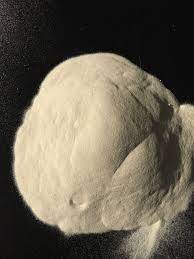
Currently, the problem of water disinfection from pathogenic microorganisms is becoming more and more urgent. Despite the measures taken to ensure the microbiological safety of drinking water, pathogenic microbes are regularly transmitted through water supply systems. According to the World Health Organization, 80% of all infectious diseases in the world are due to poor water quality or violation of sanitary and hygiene standards because of its lack.
Nowadays, water disinfection is mostly performed with the help of chlorine-containing agents. Chemical oxidants kill bacteria rather effectively. However, viruses are more resistant to chemical treatment than many bacteria. Moreover, experts have expressed growing concern over the toxicity and potential carcinogenicity of secondary oxidation products formed in the process of chemical treatment of water. Obviously, in order to solve the problem, additional methods of water sterilization should be used in addition to existing water treatment technologies, for instance filtering.
However, full-scale application of water filtering in water supply systems for population is difficult because of the high cost and low productivity of existing microbiological filters.
Lately, the solution of the problem concerning improvement of the efficiency of microorganism removal from water has been associated with the application of adsorption filters with a modified charge. Since most of the existing water contaminants (including bacteria and viruses) are electronegative, a filtering material with a positive electrokinetic potential can be highly effective for removing a wide range of pollutants from water. In addition, filter pore size does not limit its performance. It was found out that porous electropositive filters are capable of adsorbing viruses and endotoxins, the size of which is many times smaller than the average filter pore size. Such filters can extend the range of particle sizes and types of substances that can be removed by a specific sorption filter with high flow capacity preserved. Based on the properties of nanostructured aluminium oxihydroxide particles synthesized by the hydrolysis of electroexplosive alumonitride nanomaterial powder (the zeta-potential of particles in distilled water
amounts to about 40 mV), one can assume that a filtering material made on their basis can be highly effective for removing a wide range of contaminants form water.
The Institute of Strength Physics and Materials Science of SB RAS in cooperation with Aqvelite LLC developed AquaVallis – a composite electropositive in aqueous media sheet filtering material based on aluminium oxihydroxide particles (Fig. 1) and having unique sorption capacity for viruses and bacteria.
Fig 1. View of filtering material structure (a) and sheets (b): 1 – nanofibrous particles of aluminium hydroxide, 2 – fibers of polymer matrix
It was found out that AquaVallis is capable of adsorbing bacteria, viruses, and endotoxins of the size many times smaller than the average pore size of the material with 100% efficiency. The filtering material and cartridges based on it have the following characteristics:
1. Optimum filtration speed is 0.17 cm/s or 100 l/min through 1 m2 of material.
2. Sorption capacity is 107 CFU/cm2.
3. Dirt-retaining capacity is about 1,000 mg/cm2.
4. Material thickness is about 2 mm.
5. Pressure drop on the filtering material about 0.5 atm.
6. The filtering material is manufactured in sheets 120 cm ´ 80 cm in size.
7. 5 and 10 inch cartridges are produced on the basis of the filtering material. They are intended for use in standard filter holders to remove microbiological pollutants and colloidal particles form water.
Fig. 2. Dependence of volume filtration rate V on pressure drop P for distilled water filtration
Proper hydraulics of the filtering material is presented in Fig. 2. Taking into account the whole range of its characteristics, AquaVallis has no analogs in the world nowadays.
